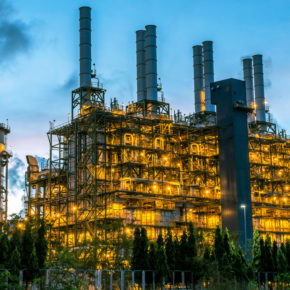
Posted on: 02. 26. 18
An oil production facility is a lot more than simply a place where oil is produced and shipped off to consumers. Here is a closer look at how facilities actually function and the many processes that go into producing the materials that we use on a daily basis.
Main and Secondary Functions of an Oil Production Facility
An oil facility surprisingly has several different functions involved with its purpose. The main function of an oil production facility is to:
- Separate oil, gas, water, and solids
- Treat oil to meet sales specifications
- Measure/Sample the Oil to Determine Value
- Deliver the Oil
These facilities also treat natural gas for sales or disposal. Fuel gas treatment may include separation from the liquids as well as other processes that include:
- Gas Compression
- Dehydration
- Removal of H2S and CO2
- Gas Processing into NGLs
Secondary Processes at an Oil Production Facility
Aside from processing oil for sale, the water and solids that are produced from these processes must be treated for disposal. In addition to separating hydrocarbons, secondary processes of an oil production facility include:
- Filtration
- Pumping
- Deionization
Natural Gas Separation
The first step in the process of a manufacturing facility is separating the gas from the liquid and the water from the oil. This part of the process usually involves a separator which is a pressure vessel into which the well stream flows to allow the gas, oil, and water to separate because of gravity.
Separators are either two-phase or three phase; in a two-phase separator, the process involves separating gas from liquids. A three-phase separator separates gas, oil, and water from three outlets.
Oil Treatment
Keep in mind that no separation is a perfect job, and there is always some amount of water remaining in the oil and it can range from less than 1 percent to 20 percent in the oil. The higher the molecular weight of the water in the oil, then the less efficient the separation was.
In order to remove the last of the water from the oil, the oil itself is processed through an oil treater. This is a similar device to a separator but is specific to helping to separate the remaining water from the oil.
After this process, the oil is usually sent to a dry oil tank where it is pumped through a sales meter to prepare for transportation.
Produced-Water Treatment
When dealing with the process of produced-water treatment from the oil. a good rule of thumb is to use two types of water-treating equipment for a gas facility and three types for an oil facility.
Common water treatment equipment includes:
- Water Skimmers
- Plate Coalescers
- Gas Floatation Devices
Pro-Gas LLC Provides Facilities with High-Quality Equipment
If you are the owner or operator of a facility and want to ensure that your production facility is operating at its most optimal level, then get in touch with Pro-Gas LLC today. We offer the best in separators and filters for your facility, and look forward to showing you our other services that have brought success to other owners in the industry.


